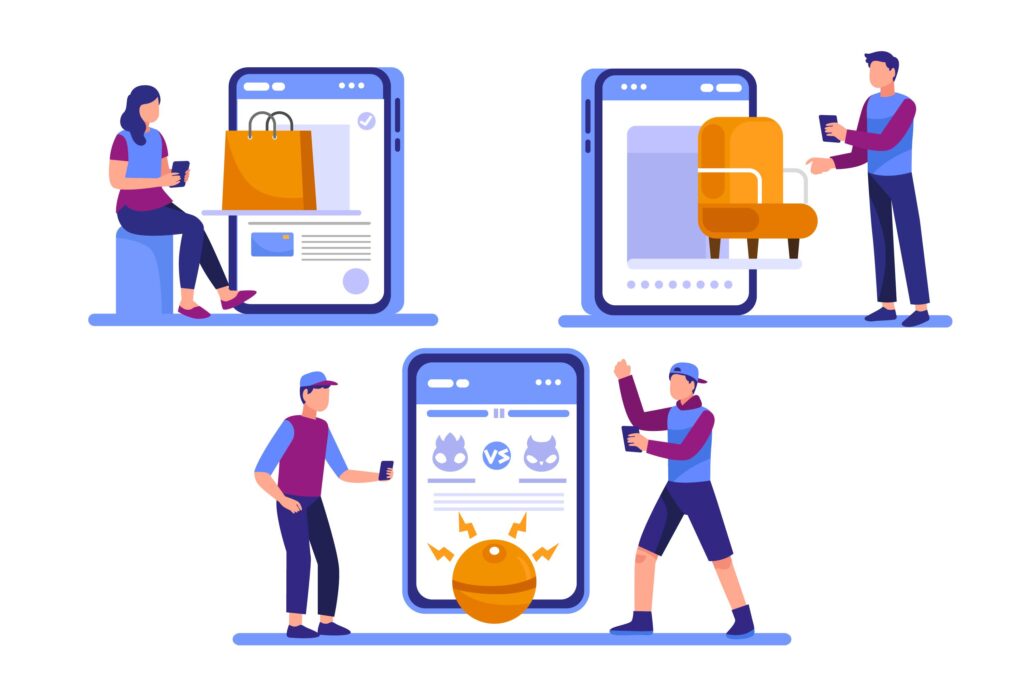
Introduction: E-commerce Mobile App
In the dynamic landscape of online business, having a robust Ecommerce Mobile App is no longer a luxury but a necessity. This comprehensive guide will walk you through the process of building a powerful app that not only enhances user experience but also boosts your business’s bottom line.
1. Understanding the Ecommerce Mobile App Landscape
Embark on your journey by comprehending the ever-evolving world of Ecommerce Mobile Apps. Explore current trends, user expectations, and the competitive market to lay a strong foundation for your app development.
2. Strategizing Your App Development
Before diving into coding, strategize your app development process. A well-thought-out strategy is key to a successful Ecommerce Mobile App.
3. Choosing the Right Platform
Delve into the pros and cons of different platforms for mobile app development. Whether it’s iOS, Android, or a cross-platform solution, make an informed decision that aligns with your business objectives.
4. Designing a User-Friendly Interface
User experience is paramount. Explore the principles of mobile app design, focusing on intuitive navigation, visually appealing layouts, and a seamless flow that keeps users engaged and satisfied.
5. Integrating Secure Payment Gateways
Security is non-negotiable in Ecommerce. Learn how to integrate secure payment gateways, ensuring a safe and trustworthy transaction environment for your customers.
6. Optimizing App Performance
Discover tips for optimizing your app’s performance, from efficient coding practices to minimizing load times. A smooth-running app enhances user satisfaction and encourages repeated usage.
7. Implementing Robust Ecommerce Features
Explore the must-have features for your Ecommerce Mobile App, such as product catalogs, shopping carts, and personalized user accounts. Tailor these features to meet your specific business needs.
8. Testing and Quality Assurance
Before launching your app, rigorous testing is essential. Learn the importance of quality assurance, including beta testing, bug fixing, and ensuring compatibility across various devices.
9. Effective Marketing Strategies for App Launch
A successful app launch requires strategic marketing. Uncover effective marketing strategies to create buzz, attract initial users, and propel your app into the spotlight.
10. Continuous Improvement and Updates
The journey doesn’t end at the app launch. Understand the significance of continuous improvement through user feedback, analytics, and timely updates to stay ahead in the competitive app market.
How to Build Ecommerce Mobile App:
Embarking on the journey of building an Ecommerce Mobile App can be both exciting and challenging. From conceptualization to execution, every step plays a crucial role in ensuring your app’s success. Let’s delve into the key components of the app-building process:
Conceptualization:
Before delving into the technical aspects, clearly define the purpose and goals of your Ecommerce Mobile App. Identify your target audience, unique selling points, and the overall user experience you aim to provide.
Platform Selection:
Consider factors such as user demographics, market share, and development costs. Whether it’s iOS, Android, or both, this decision will impact your app’s reach.
User Interface Design:
Craft an intuitive and visually appealing user interface. Prioritize user experience with easy navigation, clear calls-to-action, and a design that resonates with your brand identity.
Development and Coding:
Select a development approach based on your budget and requirements. Whether native, cross-platform, or hybrid, ensure your coding follows best practices for efficiency and scalability.
Testing and Quality Assurance:
Thoroughly test your app across devices and operating systems. Identify and rectify any bugs or glitches, ensuring a seamless user experience.
Launch and Marketing:
Create a buzz around your app launch with a well-planned marketing strategy. Utilize social media, influencer partnerships, and other channels to reach your target audience.
Post-Launch Optimization:
Regularly update your app to fix issues, add new features, and stay competitive in the market.
FAQs:
Q: Can I build an Ecommerce Mobile App on a tight budget? Absolutely! By prioritizing features, using cost-effective development approaches, and exploring open-source solutions, you can create a successful app within budget constraints.
Q: What role does user feedback play in app development? User feedback is invaluable for identifying usability issues, understanding user preferences, and making informed updates. Regularly gather and analyze feedback to enhance your app’s performance.
Q: Is cross-platform development a better choice than native development? The choice depends on your specific requirements. Cross-platform development offers cost efficiency, while native development provides a more tailored user experience.
Q: How can I ensure the security of user data in my Ecommerce Mobile App? Implement robust security measures, including encrypted connections, secure authentication processes, and regular security audits. Prioritize user data protection to build trust among your customers.
Q: What marketing strategies work best for app launches? Utilize a multi-channel approach, including social media campaigns, influencer collaborations, email marketing, and app store optimization. Building anticipation and creating a buzz are key to a successful launch.
Q: How often should I update my Ecommerce Mobile App? Regular updates are crucial to fix bugs, introduce new features, and adapt to changing market trends. Aim for at least quarterly updates to keep your app relevant and engaging.
Conclusion:
Building a successful Ecommerce Mobile App requires a strategic approach, attention to detail, and a commitment to continuous improvement. By following this comprehensive guide, you’ll be well-equipped to navigate the complexities of app development and create a standout mobile experience for your customers.
